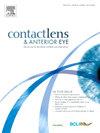干眼综合征(DES)啮齿动物模型。
IF 3.7
3区 医学
Q1 OPHTHALMOLOGY
引用次数: 0
摘要
干眼症(DES)是一系列眼科疾病,其特点是泪膜平衡受到破坏,由各种病理因素引起,主要表现为眼部不适和眼表完整性受损。随着现代生活方式造成的屏幕时间增加,DES 的发病率逐年上升,对全球公共卫生构成了重大挑战。从病理生理学上讲,DES涉及泪腺功能单元(LFU)的损伤,包括泪腺、睑板腺和角膜结膜上皮,突出了其多因素病因。目前的治疗方法主要集中在人工泪液补充水分和抗炎治疗上,但这两种方法都很有限。因此,动物模型对于了解 DES 复杂的病理机制和确定潜在的治疗药物至关重要。啮齿类动物的眼睛在结构和生理上与人类眼睛相似,而且成本效益高,因此已广泛应用于 DES 研究。本手稿回顾了目前对DES发病机制和啮齿动物模型的理解,讨论了它们的优点、缺点和相关遗传模型。目的是提供重要的见解和学术资源,以推动未来对DES发病机制和治疗方法的研究工作。本文章由计算机程序翻译,如有差异,请以英文原文为准。
Rodent models for dry eye syndrome (DES)
Dry eye syndrome (DES) is a range of ophthalmic conditions characterized by compromised tear film homeostasis, resulting from various pathological factors and primarily manifesting as ocular discomfort and impaired ocular surface integrity. With the rise in screen time due to modern lifestyles, the prevalence of DES is increasing annually, posing a significant global public health challenge. Pathophysiologically, DES involves damage to the lacrimal functional unit (LFU), including the lacrimal glands, meibomian glands, and corneoconjunctival epithelium, highlighting its multifactorial etiology. Current treatments mainly focus on artificial tears for moisture replacement and anti-inflammatory therapies, but both are limited. Consequently, animal models are crucial for understanding the complex pathological mechanisms of DES and identifying potential therapeutic agents. Rodent eyes, with their structural and physiological similarities to human eyes and cost-effectiveness, have become widely used in DES research. This manuscript reviews the current understanding of DES pathogenesis and rodent models, discussing their strengths, weaknesses, and relevant genetic models. The aim is to furnish critical insights and provide a scholarly resource to propel future investigative endeavors into the pathogenesis of and therapy for DES.
求助全文
通过发布文献求助,成功后即可免费获取论文全文。
去求助
来源期刊

Contact Lens & Anterior Eye
OPHTHALMOLOGY-
CiteScore
7.60
自引率
18.80%
发文量
198
审稿时长
55 days
期刊介绍:
Contact Lens & Anterior Eye is a research-based journal covering all aspects of contact lens theory and practice, including original articles on invention and innovations, as well as the regular features of: Case Reports; Literary Reviews; Editorials; Instrumentation and Techniques and Dates of Professional Meetings.
 求助内容:
求助内容: 应助结果提醒方式:
应助结果提醒方式:


